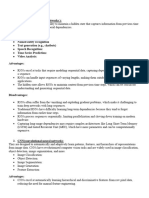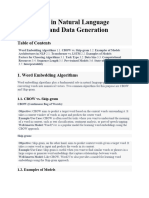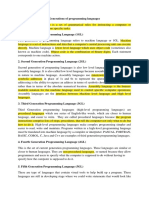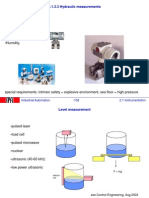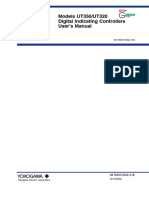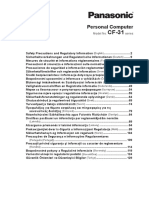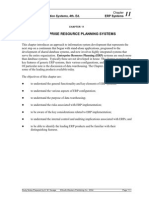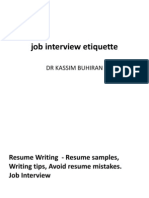0% found this document useful (0 votes)
30 views6 pagesNLP Algorithms and Pipeline
The document outlines popular NLP algorithms, detailing their advantages and disadvantages, including Bag of Words, TF-IDF, Word2Vec, and BERT among others. It also provides a step-by-step guide for implementing NLP, covering text collection, preprocessing, representation, feature engineering, model building, training, evaluation, inference, deployment, and monitoring. The comparison section categorizes algorithms based on their characteristics such as speed, semantic richness, and resource usage.
Uploaded by
RatulCopyright
© © All Rights Reserved
We take content rights seriously. If you suspect this is your content, claim it here.
Available Formats
Download as PDF, TXT or read online on Scribd
0% found this document useful (0 votes)
30 views6 pagesNLP Algorithms and Pipeline
The document outlines popular NLP algorithms, detailing their advantages and disadvantages, including Bag of Words, TF-IDF, Word2Vec, and BERT among others. It also provides a step-by-step guide for implementing NLP, covering text collection, preprocessing, representation, feature engineering, model building, training, evaluation, inference, deployment, and monitoring. The comparison section categorizes algorithms based on their characteristics such as speed, semantic richness, and resource usage.
Uploaded by
RatulCopyright
© © All Rights Reserved
We take content rights seriously. If you suspect this is your content, claim it here.
Available Formats
Download as PDF, TXT or read online on Scribd
/ 6






